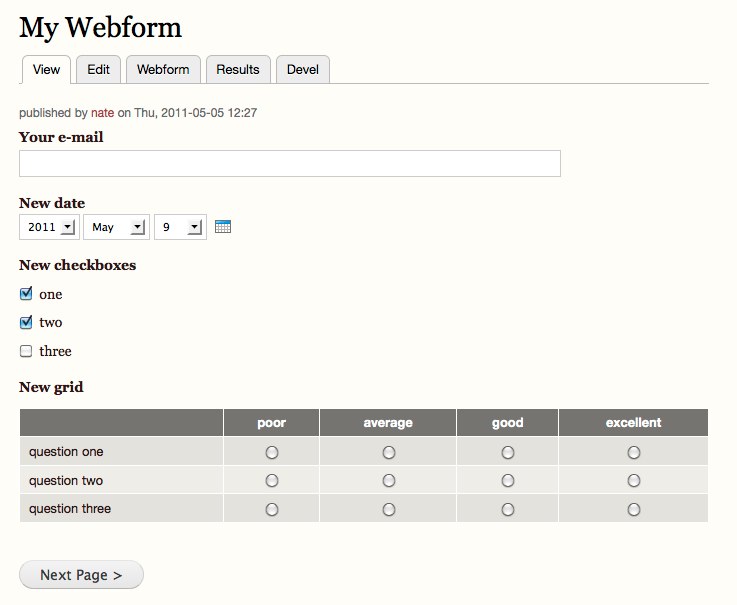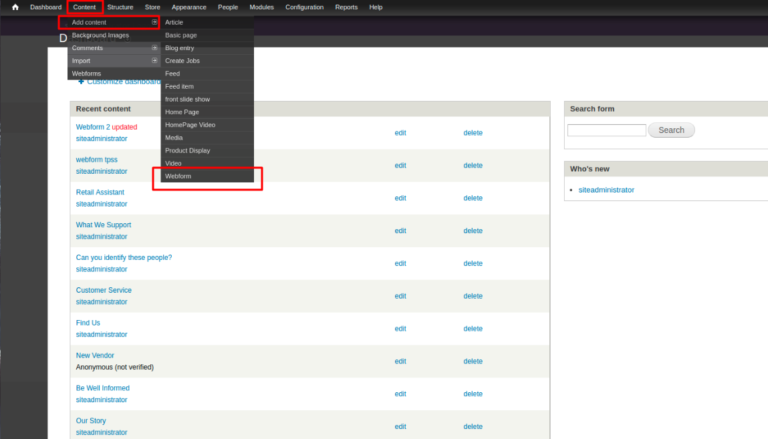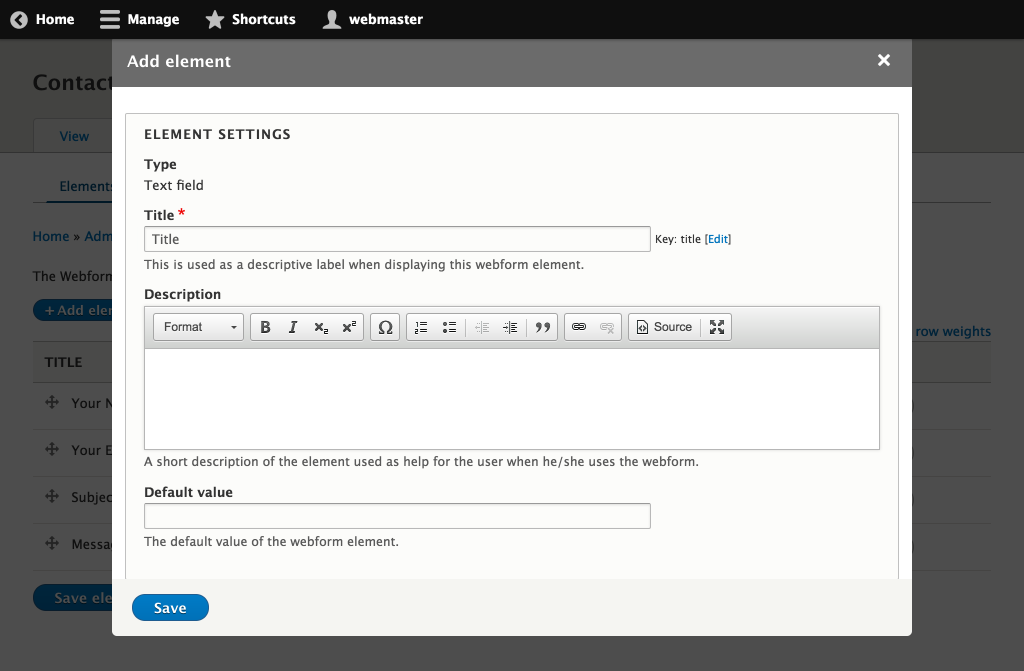

Being a member of the Drupal Association ensures that our collaboration and community are supported and sustainable.Īccessing an expert and getting professional support for your organizationĪs the Webform maintainer with over a decade of hardcore Drupal experience, I am here to help ensure that your organization succeeds in using the Webform module to address your organization's requirements.įor organizations using Drupal: I am here to help plan your project, support your team, and implement custom features.įor agencies selling Drupal services: I can help with client proposals, project planning, and augmenting your team's expertise. The Drupal Association provides the infrastructure for hosting and distributing the Webform module. Backing the Webform module's Open Collective helps guarantee that no tasks fall through the cracks.īack the Webform module's Open Collective Every single behavior and aspect of your forms and their inputs are customizable.


The Webform module uses an Open Collective to transparently collect funds that support the day-to-day tasks around the Webform module and ensure stable and reliable releases. The Webform module allows you to build any type of form to collect any type of data, which can be submitted to any application or system. I encourage you and your organization to contribute something sometimes, simply reporting and maybe fixing a minor bug can make a difference.įunding ongoing development of the Webform module By installing and using Drupal, you are a member of this community. The Webform module and Drupal are open source and built by a collaboration of people worldwide that make up the Drupal community. The Webform module is part of Drupal's contributed module ecosystem. Getting involved with the Webform module and the Drupal community You can also ask questions or help answer questions on the #webform channel on Drupal Slack. Please post general support questions to Drupal Answers. The Webform module's issue queue is for bugs, feature requests, and planning. Once you have determined what features are available, you can start exploring add-ons, which are Drupal modules that provide additional features and integrations.
#Drupal module webform how to
There are also demo modules that walk you through how to build advanced applications, including an event registration system and an application evaluation workflow. on Drupal core, and the other uses a contributed module dedicated to forms. It includes example modules that show all the available form elements and commonly used form features, including multi-step forms. The primary mechanism that enables this is the humble web form whether a. The Webform module provides a great deal of functionality out of the box.
#Drupal module webform pdf
I recommend watching the Webform module introduction and exploring videos about advanced features, including PDF generation, custom elements, and sharing forms. The Webform module's user interface includes inline help videos, which are also available on and YouTube. The best way to understand how the Webform module works is to try it out by installing the module.

Getting the most out of the Webform module Discovering the Webform module Please consider getting involved, funding development, and hiring professional support. New community member and active community member requests will be prioritized. You can support the continued success of the Drupal project by choosing to become a member or donate. View our accessibility self-assessment | Learn more about our commitment webform 6.2. The Webform module is committed to being accessible to everyone Please consider joining the Webform modules Open Collective to help ensure that the Webform module is maintained. But this is "difficult" for the editor and it is not intuitive.The Webform module provides all the features expected from an enterprise proprietary form builder combined with the flexibility and openness of Drupal. One idea would be, that the editor inserts a CSS class for the surrounding element in the field settings in order to hide the desired element (display: none) and that he removes the CSS class for the other field. Unfortunately, this function does not exist in the UI. Then the editor could hide the radio buttons and show the markup or vice versa. It would be easiest if there would be a checkbox directly in the Webform UI to show or hide (publish / unpublish) a field (analogous to the checkboxes for required fields). The editor should be able to activate and deactivate the markup message as easily as possible. In this case, instead of the radio button, a markup text "There is no data available at the moment." should appear. But sometimes it is the case that there is currently NO date for future events. It contains an option field with which you can register for one of the listed events. I created a form using the Webform module for Drupal.


 0 kommentar(er)
0 kommentar(er)
